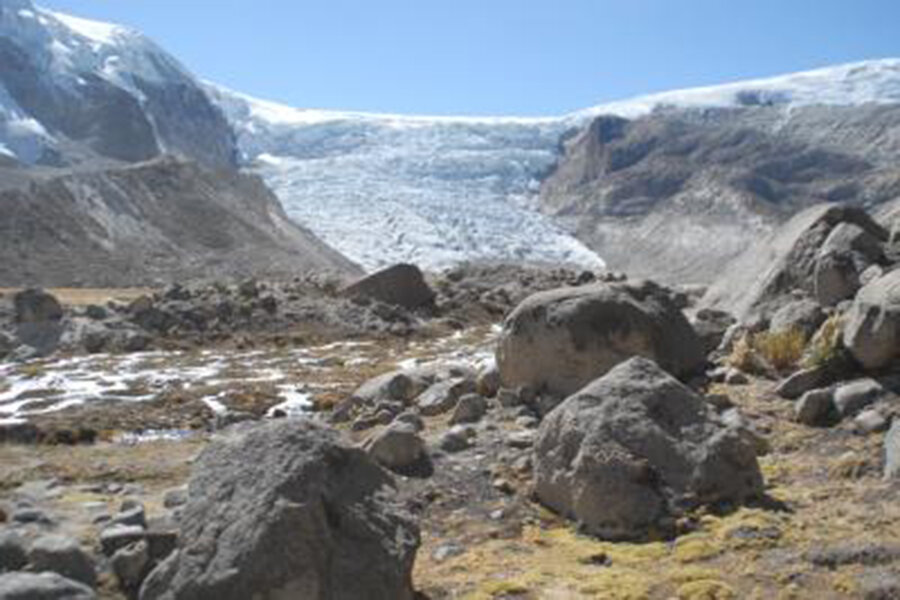A tropical glacier expanded, and then retreated. Why?
Loading...
During the so-called Little Ice Age, a period of cooler temperatures that began in the 14th century and continued until about 1850, many glaciers across the world got bigger.
One of those glaciers is Qori Kalis, a mass of ice situated on Peru's 18,000-foot Quelccaya Ice Cap, the world's largest tropical ice cap, also started expanding. But when the Little Ice Age came to an end, it started retreating.
Scientists now say that temperature was the primary driving factor in the ice cap's growth and contraction.
A paper titled "Late Holocene fluctuations of Qori Kalis outlet glacier, Quelccaya Ice Cap, Peruvian Andes" in the journal Geology examined the movement of the glacier in the last 1,000 years. It is the first study to directly link past glacial events with annual data from ice cores – cylindrical samples drilled from the glacier – extracted from the same ice mass.
The team obtained ice cores drilled by Ohio State University paleoclimatologist Lonnie Thompson. They then compared accumulation of ice in these cylinders to the expansion and retreat of the glacier over the past millennium.
The data indicated that, before 500 years ago when accumulation was average or below average, the glacier expanded. Between 500 to 200 years ago, the glacier retreated when accumulation was above average, said researchers.
The researchers did not notice an obvious relationship between the accumulation of ice recorded in the ice core and glacial fluctuation. Therefore, temperature was a likely driver of these glacial fluctuations, co-author of the paper Meredith A. Kelly, Assistant Professor of Earth Sciences at Dartmouth, told the Monitor.
"This is an important result since there has been debate about the causes of recent tropical glacial recession – for example, whether it is due to temperature, precipitation, humidity, solar irradiance or other factors," said Dr. Kelly in the press release
Ian Joughin, a glaciologist at the University of Washington's Polar Science Center, who was not involved with the study, told the Monitor that glacial fluctuations cannot be seen in isolation, and are influenced by a combination of precipitation and temperature.
Alex S. Gardner, Assistant Professor of Geography at Clark University concurs. It all depends on the location of the glacier, he says. "Some places that are drier, temperature plays a larger role and some places wetter, precipitation plays a role," he adds.
Modern day glacier movements happen due to a multiple factors. Also, the "response time" of glaciers reflect the past climate, but "teasing out the drivers of forces behind the observed changes, such as, shrinking of Quelccaya Ice Cap, are complex," he says.
This study is important in the sense that one needs to understand what happened in the Ice Age to be able to understand the present climatic conditions, Kelly says.








